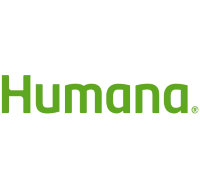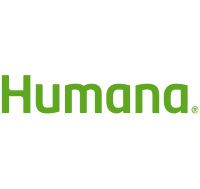
Humana Inc
NYSE:HUM


| US |

|
Johnson & Johnson
NYSE:JNJ
|
Pharmaceuticals
|
| US |

|
Berkshire Hathaway Inc
NYSE:BRK.A
|
Financial Services
|
| US |

|
Bank of America Corp
NYSE:BAC
|
Banking
|
| US |

|
Mastercard Inc
NYSE:MA
|
Technology
|
| US |

|
UnitedHealth Group Inc
NYSE:UNH
|
Health Care
|
| US |

|
Exxon Mobil Corp
NYSE:XOM
|
Energy
|
| US |

|
Pfizer Inc
NYSE:PFE
|
Pharmaceuticals
|
| US |

|
Palantir Technologies Inc
NYSE:PLTR
|
Technology
|
| US |

|
Nike Inc
NYSE:NKE
|
Textiles, Apparel & Luxury Goods
|
| US |

|
Visa Inc
NYSE:V
|
Technology
|
| CN |

|
Alibaba Group Holding Ltd
NYSE:BABA
|
Retail
|
| US |

|
3M Co
NYSE:MMM
|
Industrial Conglomerates
|
| US |

|
JPMorgan Chase & Co
NYSE:JPM
|
Banking
|
| US |

|
Coca-Cola Co
NYSE:KO
|
Beverages
|
| US |

|
Walmart Inc
NYSE:WMT
|
Retail
|
| US |

|
Verizon Communications Inc
NYSE:VZ
|
Telecommunication
|
Utilize notes to systematically review your investment decisions. By reflecting on past outcomes, you can discern effective strategies and identify those that underperformed. This continuous feedback loop enables you to adapt and refine your approach, optimizing for future success.
Each note serves as a learning point, offering insights into your decision-making processes. Over time, you'll accumulate a personalized database of knowledge, enhancing your ability to make informed decisions quickly and effectively.
With a comprehensive record of your investment history at your fingertips, you can compare current opportunities against past experiences. This not only bolsters your confidence but also ensures that each decision is grounded in a well-documented rationale.
Do you really want to delete this note?
This action cannot be undone.

| 52 Week Range |
233.89
470.1
|
| Price Target |
|
We'll email you a reminder when the closing price reaches USD.
Choose the stock you wish to monitor with a price alert.

|
Johnson & Johnson
NYSE:JNJ
|
US |

|
Berkshire Hathaway Inc
NYSE:BRK.A
|
US |

|
Bank of America Corp
NYSE:BAC
|
US |

|
Mastercard Inc
NYSE:MA
|
US |

|
UnitedHealth Group Inc
NYSE:UNH
|
US |

|
Exxon Mobil Corp
NYSE:XOM
|
US |

|
Pfizer Inc
NYSE:PFE
|
US |

|
Palantir Technologies Inc
NYSE:PLTR
|
US |

|
Nike Inc
NYSE:NKE
|
US |

|
Visa Inc
NYSE:V
|
US |

|
Alibaba Group Holding Ltd
NYSE:BABA
|
CN |

|
3M Co
NYSE:MMM
|
US |

|
JPMorgan Chase & Co
NYSE:JPM
|
US |

|
Coca-Cola Co
NYSE:KO
|
US |

|
Walmart Inc
NYSE:WMT
|
US |

|
Verizon Communications Inc
NYSE:VZ
|
US |
This alert will be permanently deleted.
 Humana Inc
Humana Inc
Humana Inc
Investor Relations
In the rapidly evolving landscape of American healthcare, Humana Inc. stands as a formidable player, interweaving its mission to improve public health with robust profitability. Founded in 1961, Humana began as a nursing home company and has since metamorphosed into one of the United States' leading health insurance and managed care providers. The company's core business revolves around offering diversified health insurance plans, with a strong emphasis on Medicare Advantage. This government-subsidized program allows private insurers to offer Medicare benefits, which Humana artfully packages with additional services like dental, vision, and wellness programs. This strategy not only broadens its appeal to the aging baby boomer demographic but also ensures a steady stream of revenue supported by federal payments.
Humana's financial narrative is enriched by its commitment to integrating care delivery and health plan administration. Through strategic acquisitions and partnerships, the company has expanded its capabilities beyond traditional insurance, diving into health services such as primary care centers and home health services. This integration allows Humana to control costs more effectively, directly improving patient outcomes and enhancing customer loyalty. With data-driven insights and a proactive approach towards preventative care, Humana aligns its operations to both elevate the customer experience and drive down healthcare expenditures—cultivating a cycle that reinforces its market position and financial performance.

In the rapidly evolving landscape of American healthcare, Humana Inc. stands as a formidable player, interweaving its mission to improve public health with robust profitability. Founded in 1961, Humana began as a nursing home company and has since metamorphosed into one of the United States' leading health insurance and managed care providers. The company's core business revolves around offering diversified health insurance plans, with a strong emphasis on Medicare Advantage. This government-subsidized program allows private insurers to offer Medicare benefits, which Humana artfully packages with additional services like dental, vision, and wellness programs. This strategy not only broadens its appeal to the aging baby boomer demographic but also ensures a steady stream of revenue supported by federal payments.
Humana's financial narrative is enriched by its commitment to integrating care delivery and health plan administration. Through strategic acquisitions and partnerships, the company has expanded its capabilities beyond traditional insurance, diving into health services such as primary care centers and home health services. This integration allows Humana to control costs more effectively, directly improving patient outcomes and enhancing customer loyalty. With data-driven insights and a proactive approach towards preventative care, Humana aligns its operations to both elevate the customer experience and drive down healthcare expenditures—cultivating a cycle that reinforces its market position and financial performance.





























 You don't have any saved screeners yet
You don't have any saved screeners yet
